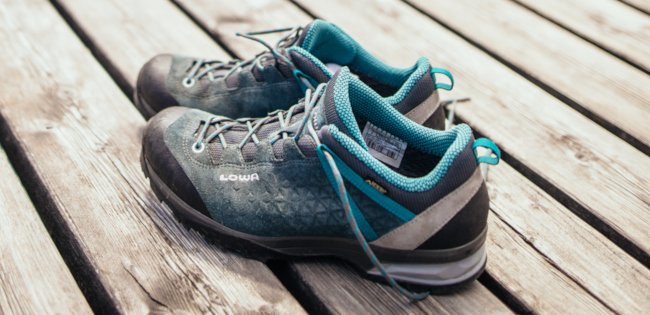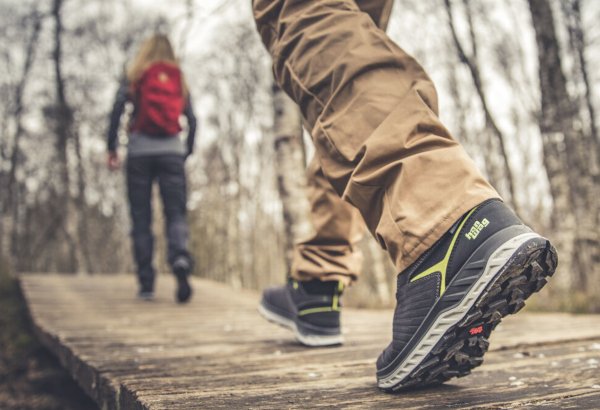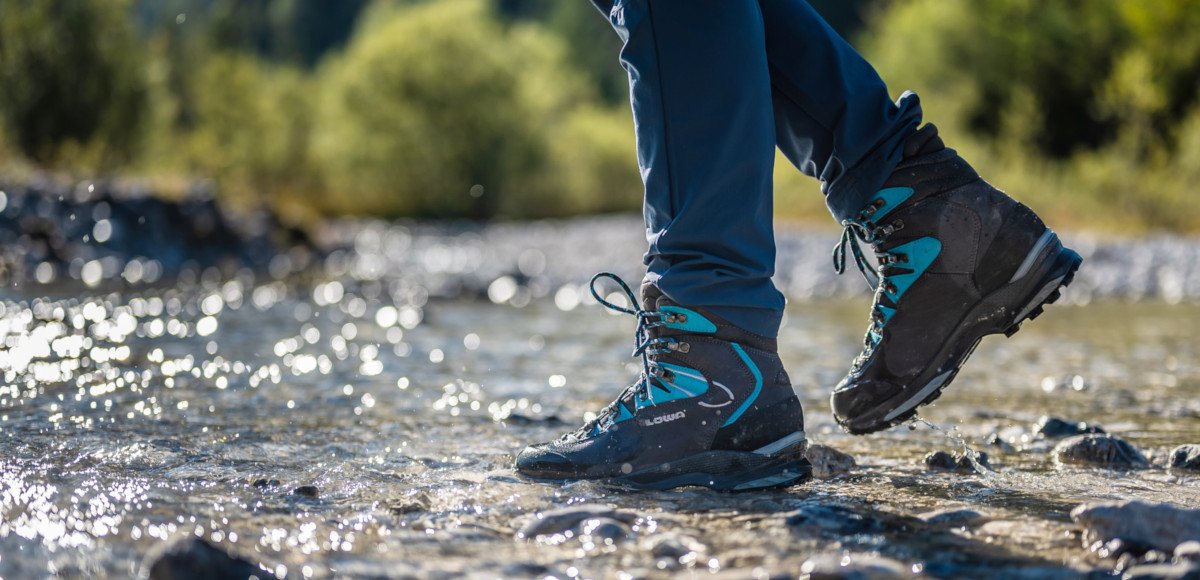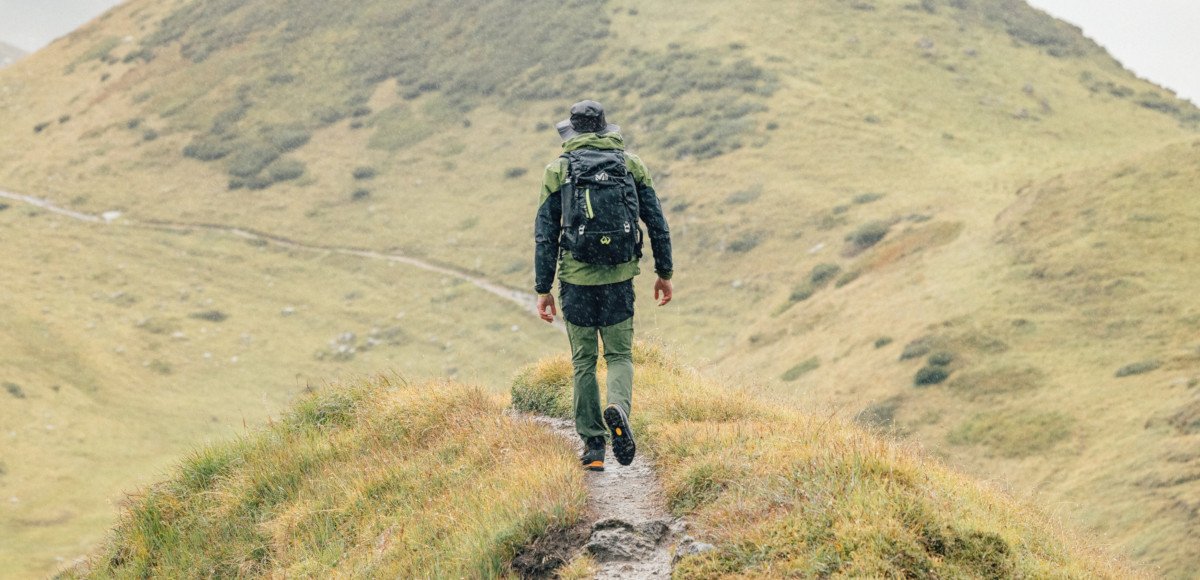To enjoy your hikes, having the right footwear is critical. To help you find the right pair of hiking shoes or boots, we will explore the various elements to take into account to pick a selection among a wide range of brands available at Glisshop, including Millet, Hanwag, La Sportiva, Lafuma, Lowa, Mammut, Scarpa. Our goal is to help you choose a pair that suits best your hiker profile, foot shape and the type of hiking you do. Keep in mind that while the shoes or boots represent 80% of your comfort, additional insoles and hiking-specific socks allow to achieve optimal comfort.
Summary
- Choose footwear suited to your activity (light hiking, alpine trekking, long-distance backpacking).
- Opt for a low-cut, mid-cut or high-cut upper depending on the level of ankle support and the technical nature of the terrain.
- Select an outsole with good grip and stiffness for rugged ground, or a more flexible one for easier walking.
- Check for a waterproof and breathable membrane (such as Gore-Tex) according to weather conditions and intended use.
- Ensure secure heel support to prevent rubbing and reduce the risk of blisters.
- Choose a fit that’s neither too tight nor too loose, leaving enough room for your toes when descending.
- Consider the weight of the boot: lighter models for fast hiking, sturdier ones for heavy-load trekking.
- Try on the boots at the end of the day wearing appropriate hiking socks for a realistic fit.
- Allow for a break-in period before a long outing to maximise comfort and performance.


Which hiking boots should you choose?
The choice of hiking boots depends on the type of terrain, the duration, and the intensity of your activity. For short walks or easy hikes on well-maintained trails, a lightweight and breathable shoe is ideal. For longer hikes with elevation gain or technical terrain, a boot that provides good support, a grippy sole, and reinforced protection is preferable. For trekking or mountaineering, a more rigid and waterproof mountain boot is often necessary to ensure stability and protection against harsh weather and rugged terrain.
What is the difference between hiking and trekking?
Hiking and trekking mainly differ in terms of duration and physical demand. Hiking refers to a walk lasting a day or less, usually on marked trails with lightweight gear. Trekking, on the other hand, takes place over several days and is done in full or partial self-sufficiency, requiring more extensive equipment and often a heavier backpack. It typically involves more challenging and sometimes remote terrain. Trekking boots are therefore designed to provide a balance between comfort, support, and durability, making them suitable for long hikes and demanding conditions.
What is the difference between walking shoes and hiking boots?
The difference between walking shoes and hiking boots lies mainly in their design and intended use. Walking shoes are made for flat surfaces such as roads or well-maintained paths. They are lighter, more flexible, and prioritise comfort over short distances. In contrast, hiking boots are more robust, offer better support, and have a grippier sole, making them suitable for rough terrain and longer distances.
Choosing the right walking shoes or boots based on the type of hike
First and foremost, it is essential to determine the type of hike you plan to undertake (leisurely walk, short hike, approach, trekking, Nordic walking...). It is also important to consider the environment you will be moving through (plains, forests, hills, high-altitude mountains, rocky terrain, ice, snow, mud...) as well as the season(s) and weather conditions. If you are planning to hike at high altitude, where trails may not always be well-defined, you will need sturdier and more rigid boots compared to hiking on well-marked paths with gentle inclines and minimal rocky terrain.
From casual walks to short hikes: lightweight shoes
To satisfy your need to be in nature and quench your thirst to breath fresh air, Glisshop recommends lightweight and breathable hiking shoes. We recommend low cut or mid cut models. However, if you need more ankle support, there is nothing wrong with high ankle models.
If you plan on hiking often, notably early in the morning when there may be dew, as well as in poor weather, it is a good idea to choose waterproof shoes or boots. Your feet will be protected from moisture and you will not worry about the elements. In all cases, your feet will breathe as waterproof membranes are designed to be breathable.
For short walks or hikes, particularly in summer, wearing sandals rhymes with breathability. Naturally, it all depends on the condition of the trails as scrambling through rocks with sandals on exposes you to injuries.
You can also choose trail running shoes, whose outsoles are appropriate to walking on trails, as opposed to standard trainers.
Trail running or hiking shoes?
Trail shoes look similar to running models, the difference being the tread pattern which leaves little doubt about their intended use on trails and unpaved surfaces. They have the advantage of being lightweight, very lightweight even, making them particularly relevant to a large number of hikers who prefer them over hiking shoes. As they are primarily meant for running, trail running shoes are not very stiff, which promotes a natural foot gait and great propulsion.
As some hiking shoes are built with outsole that allow to feel comfortable on rocky trails, they are several types of trail running shoes, some of which also provide good grip on rocky terrain. Nowadays, most lightweight hiking shoes feature flexible outsoles for a wide range of usage. Along with trail running shoes, they are also ideal for leisure walks and hikes on easily accessible trails or more technical terrains. Trail running and lightweight hiking shoes are perfect for fast-paced hiking such as Nordic walking or fast hiking.
The specificities of approach shoes
Inspired by high ankle mountain boots, approach shoes have been a category of their own for a few years now. More often than not, they are low cut shoes with stiff soles.
Originally, approach shoes were used by hikers to reach crags and walk through steep and rugged areas. They share common traits with some climbing shoes: a lacing system that goes down to the toe box and rubber on the front of the outsole that allows to climb easy climbing routes and via ferrata.
They were also originally designed with alpinists in mind, enabling them to reach the bottom of the summit they are aiming to climb with lighter shoes compared to their mountaineering boots.
While approach shoes are aptly named, they are now also used by hikers who prefer them over high ankle boots, because they are lighter but as grippy and stiff. These characteristics are looked for by hikers who plan on venturing on rugged trails, screes, etc. Finally, approach shoes are praised for their ruggedness, as well as their durability.

Mountain shoes and boots
Mountain hiking doesn’t necessarily mean alpinism. For day hikes on fast rolling trails, low ankle or trail running shoes can work perfectly. It all depends on how fast you want to be, as well as the terrain, weather and your physical condition.
In high altitude, trails are not always traced. You may walk on short grass in meadows, soft dirt and roots in forests, loose, slippery or pointy rocks. You can also encounter mud, cross streams or even neves. For all these reasons, and because the weather can change very fast in a mountain environment, Glisshop recommends waterproof mid cut or high ankle boots. They offer weather protection and better foot support. Mid cut boots reach the ankle bones, or slightly higher, while high ankle boots perfectly wrap around your ankles.
It is worth mentioning that mountaineering boots offer excellent support. They also perfectly protect your feet from rocks and the cold, but because of their great stiffness and weight, they are not particularly well suited to simple mountain hikes.
Trekking and backpacking boots
Regarding backpacking and trekking, the choice is influenced by how many days and hours you will be walking for. It also depends on the terrain, the season and elevation. Ranging from a few days to multiple weeks, a trek can include nights in bed and breakfasts, refuges, or of camping and can be fully or partially self-sufficient. These elements influence the capacity and weight of your backpack, as well as the choice of your backpacking boots. A heavier load requiring more stability.
By taking all these parameters into account, Glisshop recommends mid cut of high ankle boots. For backpacking, it is also preferable to pick robust models, which are slightly heavier than standard hiking boots. Trekking requires reliable equipment, which while being a bit more expensive, is worth the money in the long run thanks to the foot comfort and durability provided.
Key elements to choose the right hiking shoes or boots
Cuff height
Influenced by the type of hikes, the cuff height is generally linked to the model’s torsional stiffness and as a consequence, the amount of ankle support. There are 3 cuff heights:
Low cut
The advantages of low cut hiking shoes are their lightness and the great range of motion they offer. They are best suited to shorter, easier hikes, lasting half a day or a day.
Mid cut
Reaching the ankle bones or higher, mid cut boots are regarded as the most versatile. They provide confidence to hike on mountain trails, while being comfortable and relatively lightweight.
High ankle
Being the only models reaching ankle height, high ankle boots generally offer the best protection and level of support. They are your best allies for long hikes on steep trails and in a mountain environment.

Stiffness
The stiffness of your hiking footwear is a key element to provide stability and prevent you from painfully rolling an ankle.
The stiffness of boots
High ankle boots are generally stiffer. They offer the most support, this is why they are better for longer hikes and rugged terrain. They are also recommended when you wear a backpack, especially a heavier, bigger one. It is best to favour stability when you are carrying the required equipment for a multi-day hike (tent, sleeping bag and pad, food, camping stove, water, change of clothes...).
The stiffness of low cut shoes
Low cut shoes are generally less stiff. Their flexibility enables a natural foot roll. While they are very comfortable on casual walks, they are also much appreciated for more active hiking because they promote propulsion. We recommend them for walks, short hikes and Nordic walking, their favourite activity. Of course, they are versatile and can be worn at night, around camp, to let your feet relax after a long day of hiking. Sandals are also a good idea at camp, as long as it doesn’t get too cold.
The stiffness of approach shoes
Originally used by climbers to reach crags, some of them being difficult to get to, approach shoes are praised for their stiffness. This explains why they are now very appreciated by hikers looking for support and stability on rocky terrain. They are also much lighter than high ankle boots.
Materials
Hiking footwear can be made of various materials, each with its pros and cons.
Leather hiking shoes and boots
While it is heavier and stiffer than synthetic materials, leather is also naturally wear resistant. Making it ideal for hikers looking for robustness and durability. While leather is not very breathable, it is known to prevent water from getting in. However, on the long run, it can absorb some of it, making it heavier. To retain its qualities longer, it requires some care, such as applying a nourishing and waterproofing wax. Keep in mind that nubuck or suede leather hiking shoes and boots are lighter and more breathable.
Synthetic material hiking shoes and boots
Synthetic materials are appreciated for their lightness. They have been used by hiking footwear manufacturers for several years because they offer a great balance between weight and strength. They also have the advantage of being particularly breathable. Just like leather models, synthetic material shoes and boots can benefit from waterproof and breathable membranes.

Waterproofness
To keep your feet dry walking through dew, wet areas, across overflowing streams or under the rain, Glisshop recommends waterproof hiking shoes or boots. Whether they are leather or synthetic, numerous models benefit from a waterproof/breathable membrane. In the field, one brand stands out from the competition, Gore-Tex. While Gore-Tex membranes are not the only ones on the market, they remain a benchmark in terms of waterproofness.
It is important to know that water resistance doesn’t mean watertight. Indeed, water can get inside through the top, justifying the choice of mid cut or high ankle models to hike in wet conditions.
You may also experience a feeling of moisture inside your shoes because of perspiration. To avoid this discomfort, Glisshop recommends to wear hiking-specific socks which dry very quickly if they happen to absorb moisture.
Outsole
Outsoles are another key element when choosing a pair of hiking shoes as they guarantee grip and traction. They also contribute to your comfort and safety during your adventures.
Traction depends on the rubber quality and its ability to adhere to slick and/or wet surfaces. Grip depends on the shape, quantity and height of the lugs, which offer a varying degree of grip on rocks, soft surfaces, muds, etc.
Multiple brands exist on the hiking footwear market, such as Vibram, a benchmark rightly regarded as a guaranty of quality. Other brands such as Pomoca or Friction are praised for their performance. Some tire manufacturers work hand in hand with shoe brands and develop dedicated outsoles for them. We can name Continental with Adidas or Michelin with Salewa and Mizuno.
Contagrip outsoles are developed by Salomon and the brand is the only one to use them. They have been proving their performance for several years.
Lacing system
The lacing system is one of the elements to consider when choosing a pair of hiking shoes. It has the role of providing foot support without creating any pressure spot.
- Quick lace or speed lace systems are generally featured on low cut shoes because of their ease of use.
- Round or flat traditional laces are more frequently found on approach shoes, mid cut and high ankle boots. They offer a precise fit and are praised for their strength and wear-resistance.
Most hiking boots feature self-locking hooks. Some pair allow to differentiate the tension between the ankle and instep to adapt it to the ascents and descents. It is the case of some models from Meindl for instance.

Rand
A great number of hiking shoes feature a rand, most often than not on the front to protect the toe box. On some pairs, in addition to the front, the rand continues on the sides. Some approach shoes, as well as some mid cut and high ankle boots benefit from a full rand for optimal protection.
Tongue
The tongue rests on the instep and goes up to the ankle on high ankle boots. It contributes to comfort and can prevent water and debris from getting inside.
How to choose the size of hiking shoes or boots?
To avoid feeling any discomfort when walking, it is essential to pick the right size. Easier said than done when you cannot try them on you might say. To help you, Glisshop has a pedimeter available to download and print on each product page. It will allow you to know your size. If you want to make sure of the correspondence for a brand, feel free to contact one of our experts via chat, email of phone.
Once you have identified your size and keeping in mind that your feet can increase in length during activity and that the foot arch can collapse under the weight of your backpack, here are the recommendations depending on your style of hiking:
- For short hikes, half a day or a day, with little elevation, get at least an extra 0.5 cm of space.
- For long distance hikes, from 1 to 3 days, with elevation, get at least an extra 1 cm of space.
This extra room is needed to prevent your toes to bump on the front of the shoe during descents.
To check if your hiking shoes are the right size, we recommend putting them on leaving the laces untied and sliding a finger behind your heels. If there is no room, it is best to pick the size above. On the other hand, if there is too much space, you can consider the pair is too big.
If the size is right, you can now try the shoes. To do so, tie the laces without overtightening, the lacing system is here to stabilise the feet, not compress them. Glisshop recommends to keep the shoes on for 10 to 15 minutes and walk around, to detect any uncomfortable contact points.
The best hiking footwear for men or women
If you are looking for hiking shoes or boots, it doesn’t matter whether you are a man or woman. What is of prime importance is finding a pair that fits your feet and matches your style of hiking. The first thing to do, is identifying the type of shoe that works best for your activity and the type of terrain. Then, the right pair should fit your foot shape. It should also offer protection, support and breathability.
Which shoes are best for walking on tarmac?
For walking on tarmac, it is recommended to choose shoes with good cushioning to absorb impact and protect your joints. A flexible sole is preferable to ensure a natural foot roll and reduce fatigue. Breathability is also important to prevent heat and moisture buildup, especially during long walks in urban environments.

Need help finding the right pair of hiking boots?
You may also like
Backpacking in the Mountains
How to prepare
First trek
How to be well prepared?
How to Plan a Mountain Hike?
Best practices for a safe and enjoyable mountain hikes.
Common Mistakes to Avoid When Starting Out Hiking
A guide to avoiding frequent mistakes and starting your hiking journey with confidence.
